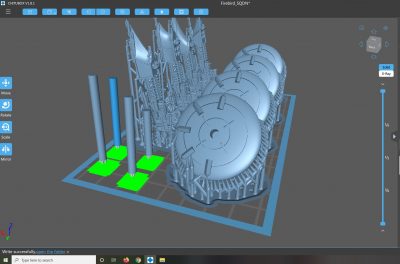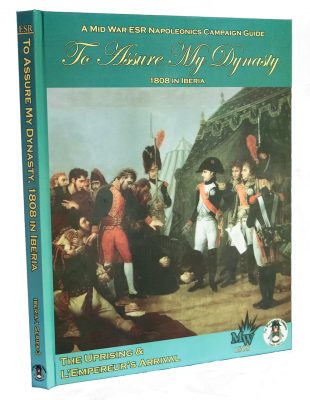Gaming
3D Resin Printing…..Thoughts about that and the Possible future of Miniature War Gaming
By Tom Burgess
Editor’s note: This is the second of our two part look at 3D resin printing for wargamers.

I know what you are thinking “wouldn’t it be great if I could print the high quality wargame miniatures I want on demand?” The true wargamer response to that has to be “of course!” That’s what I was thinking when I ordered my own 3D resin printer. But it has been an interesting journey for me with some pleasant and some not so pleasant surprises. This endeavor has made me think about the future of wargaming and how I will fit in with it now that I can make my own models.
Quality resin 3D printers are coming down in price and there are so many people offering free and for-a-fee 3D print files, it just may be that we are entering a new age for miniature wargaming. So where might this road be taking us, and is 3D printing for everyone? These are questions that I will attempt to look at in this article. There may be some misconceptions.
So the first thing you are thinking about when considering to buy a 3D resin printer is probably that you’ll save a lot of money on your wargame miniatures.
Resin 3D Printer – a war gamer’s dream come true?
By Paolo Paglianti
Editor’s note: this is the first in a two part series looking at 3D resin printing. The second part, where Iron Tom takes a look at many of the cons of
Also: click on any of Paolo’s images to see a higher res image
Back in the 70s and 80s, Star Trek forecast a lot of things that we later saw in real life – touch screens, smartphones, TV screens as walls, personal computers in every house, and AI answering with a human voice. Also the replicator: the Enterprise crew uses it to create any kind of food, while our “replicators” – the 3D Printers – allow creating resin models. For a wargamer, this is even better than the food!
Green Vs. Tan: We’re Not in the Sandbox Anymore…

By Glenn Van Meter
I was recently asked to try out Strategy Wave Studios’ Combat Storm system. I was excited to hear that a gaming company had decided to put rules to the plastic toy soldiers I grew up playing with. My friend Brad came over to help me give them a go. We quickly reviewed the rules together. In this system, each individual pose represents a different type of soldier such as a rifleman, grenadier, or sergeant, and they’re grouped in units of 3-12. Special weapons troopers like AT specialists and grenadiers still carry the standard infantry armament of their faction besides their limited ammo special weapon. We were pretty impressed with the depth of the rules. It wasn’t the beer and pretzels type system either of us had been expecting.
The army lists currently published have the green force playing the US Army and the tan force playing the WARPAC weapon-armed “People’s Coalition Front”. My plastic toy soldiers are actually a mix of green, tan, and grey minis. Brad picked US Green and I decided to organize my PCF force in color-coded squads.
The rules also come with a wealth of printable paper scenery with a modern desert city theme and it all looks really good. Unfortunately I lacked access to cardstock and a printer. Brad and I decided that a more Vietnam jungle village table would work well as long as we had enough terrain on it. So we had a dirt road going diagonal from corner to corner, through a village with a bunch of plastic toy soldier sandbag emplacements, and a lot of jungle patches around that. The mission would be an encounter, with both forces starting on opposite short sides of a 6’x4’ table with the objective of slaughtering the opposing force.
My 17th Century Miniatures Project
By Steve Murga
I am fascinated by 17th Century European History. I grew up in Spain reading the Alatriste Novels by Spanish novelist Arturo Perez-Reverte, the adventures of a Spanish sword for hire in the backdrop of a decadent and crumbling Spanish Empire. Is the fast-evolving nature of the 17th Century that captivates me the most, a period between the medieval world and the modern era, a time where the last vestiges of feudalism gave away to the modern state.
25 Year Retrospective of the Close Combat Series (part one)
by Patrick S. Baker
“Take command of men who act like real soldiers” was the tag line on the Close Combat box.

When first released in 1996 Close Combat took the war game world by storm. It was not just one of the first real-time tactics/real-time strategy (RTT/RTS) war games, but also boldly claimed to be an accurate simulation of modern war. The game was developed by Atomic Games and published by Microsoft, and was one of the few games published by the software giant at that time.
It was originally announced as Beyond Squad Leader and was to be a digital sequel of Avalon Hill’s million-selling Advanced Squad Leader (ASL) board war game franchise. However, the companies’ affiliation was fraught and, eventually, Atomic and Avalon Hill parted ways. Atomic renamed the project Close Combat, and continued the development, with Microsoft coming in as publisher.
Little Green Army Men: A Review of Combat Storm
By Mitch Reed
Well before I ever rolled a die, painted a miniature, or put a map under plexiglass I played with little green army men. As my son was growing up, he also gravitated to those green men and played with them for hours. I always wondered what use I would have for the bucket of army men as I grew up. My question has been answered with the game from .
ESR : New Campaign Guide – To Assure My Dynasty – 1808 Iberia
 By Tom Gall
By Tom Gall
The Wargaming Company makers of Et Sans Résultat (perhaps better known as ESR) have started to update and release their line of campaign books. The first in the refreshed line is To Assure My Dynasty, . These new campaign books are collectively called Series 3 to set them apart from past volumes.
With the book in your hands, the very first thing you’ll notice is, it’s a hardback. The prior series were spiral-bound volumes. Definitely a noticeable increase in quality but what about the content?
The campaign guide is 184 pages, all in full color. The book is broken up into several sections, first giving you a bit of background about the peninsular war, the countries, armies, and personalities involved in the conflict.
The next section covers how to use the book, with guidance on the size of the table, players, how to set up the maps, working with rosters, and how to handle scenarios that last for an extended period of time. After that is the campaign, 13 historical battles broken up into two logical parts. Last but not least is an extensive guide to the army uniforms each unit wore.
Bat-rep Bagration German Panzer IV/70s vs British tankers
By Tom Gall
With the new Bagration Germans lists, I’ve been quite eager to put them to the test on the tabletop. Here in Minnesota as the various quarantine rules have been loosening up, in-store gaming is starting to happen in various places. Walker brought his British against my Germans, for a game at D6 Games in Rochester Mn.
Preview: Pavlov’s House Digital Rings the Bell
By Mitch Reed
When I first heard about this game being ported to a digital format, I was excited and also worried on how some ports from board games turn out. After bugging Dave Thompson for a preview copy, I got the chance to check it out, and it is amazing and will make you salivate to play over and over again.
